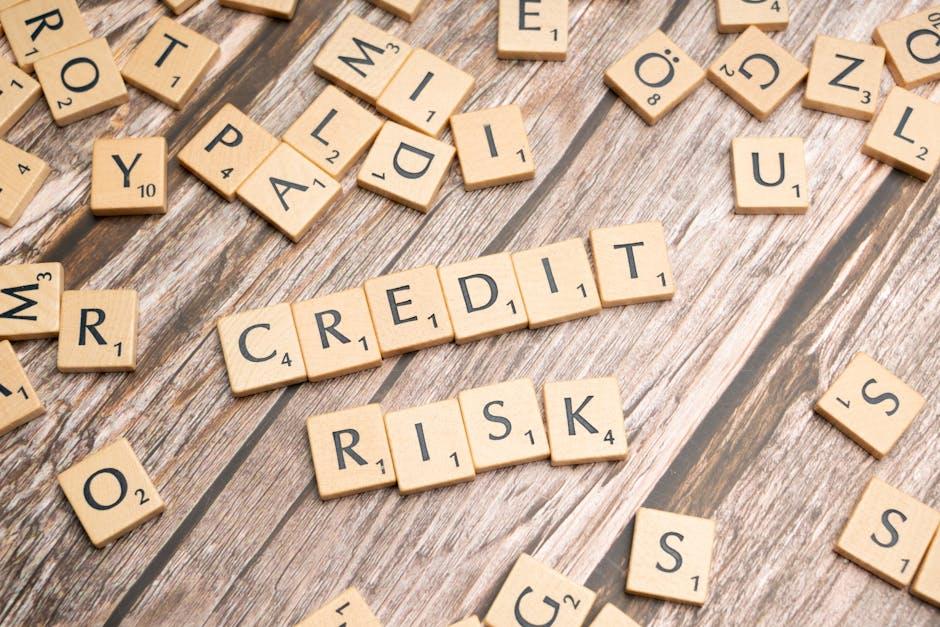In the intricate dance of global economics, trade policies act as both choreographer and performer, orchestrating the flow of goods, services, and capital across borders. As nations engage in this complex ballet, the rhythm of trade agreements, tariffs, and sanctions can reverberate through the financial markets, shaping the contours of global credit risk. In this ever-evolving performance, the stakes are high; a misstep in policy can send ripples across continents, influencing everything from sovereign credit ratings to the stability of multinational corporations. This article delves into the pivotal role trade policies play in the global credit landscape, examining how strategic decisions made in the halls of power can alter the financial destinies of nations and industries alike. With an authoritative lens, we explore the intricate interplay between policy and risk, revealing the hidden forces that drive credit dynamics in our interconnected world.
Navigating the Nexus of Trade Policies and Global Credit Risk
In the intricate web of international finance, trade policies serve as pivotal threads that weave together the fabric of global credit risk. These policies, often shaped by geopolitical strategies and economic imperatives, can dramatically influence the creditworthiness of nations and corporations alike. When tariffs rise or trade agreements falter, the ripple effects can be profound, altering the landscape of global markets and reshaping risk assessments. Understanding the nexus between trade policies and credit risk is essential for investors and policymakers who navigate these turbulent waters.
Consider the following factors that illustrate this complex relationship:
- Tariff Impacts: Increased tariffs can lead to higher costs for importers, affecting their profitability and, consequently, their credit ratings.
- Trade Agreements: The establishment or dissolution of trade agreements can either bolster or undermine economic stability, influencing the credit risk of involved countries.
- Supply Chain Disruptions: Policies that disrupt supply chains can lead to financial strain on businesses, impacting their ability to meet debt obligations.
- Currency Fluctuations: Trade policies can cause currency volatility, which in turn affects the repayment capacity of foreign-currency-denominated debt.
By examining these elements, stakeholders can better anticipate and mitigate the risks posed by shifting trade policies, ensuring a more resilient approach to global credit risk management.

Unveiling the Economic Impacts of Protectionism on Credit Stability
In an era where global trade policies are increasingly leaning towards protectionism, the implications for credit stability are profound and multifaceted. Protectionist measures, such as tariffs and import quotas, can lead to significant shifts in economic dynamics, influencing credit risk in both predictable and unforeseen ways. Supply chain disruptions are a common consequence, leading to increased costs for businesses reliant on international trade. These disruptions can strain corporate cash flows, potentially resulting in higher default rates and increased credit risk for lenders.
- Increased cost of goods: Tariffs often lead to higher prices for imported goods, affecting consumer spending and business investment.
- Market volatility: Protectionist policies can create uncertainty in global markets, leading to fluctuations in currency values and impacting international debt obligations.
- Retaliatory measures: Countries affected by protectionist policies may impose their own trade barriers, exacerbating economic tensions and further destabilizing credit markets.
Moreover, the ripple effects of protectionism can extend beyond national borders, affecting global credit conditions. As countries engage in trade wars, the resulting economic slowdowns can lead to a tightening of credit conditions, making it more challenging for businesses and consumers to access financing. In this interconnected world, the economic impacts of protectionism are not confined to any single nation but resonate across global financial systems, shaping the landscape of credit risk.

Strategic Policy Interventions for Mitigating Credit Risk
In the complex landscape of global finance, strategic policy interventions serve as a bulwark against the rising tide of credit risk. Governments and financial institutions can deploy a variety of measures to stabilize and secure credit environments. Regulatory frameworks are pivotal, providing a structured approach to managing financial transactions and ensuring compliance with international standards. These frameworks often include:
- Risk assessment protocols that evaluate the creditworthiness of international partners.
- Capital adequacy requirements that ensure financial institutions maintain sufficient capital reserves.
- Enhanced transparency measures to promote trust and reduce information asymmetry.
Moreover, trade policies themselves can be tailored to mitigate credit risk. By fostering diversified trade partnerships and reducing dependency on single markets, countries can cushion their economies against external shocks. Implementing tariff adjustments and export incentives can further stabilize trade flows, thereby indirectly supporting credit stability. These strategic interventions, when harmonized with global financial practices, not only safeguard national interests but also contribute to a more resilient global economic framework.

Harnessing International Cooperation to Fortify Financial Resilience
In an era where global economies are intricately intertwined, trade policies play a pivotal role in shaping the landscape of international credit risk. These policies not only influence the flow of goods and services across borders but also affect the stability and resilience of financial systems worldwide. As nations navigate the complexities of international trade, the alignment of trade policies with financial regulations becomes crucial in mitigating potential risks. Strategic cooperation among countries can enhance financial resilience by fostering a stable trade environment that supports sustainable economic growth.
- Harmonized Regulations: Aligning trade policies with international financial standards can help reduce discrepancies that often lead to credit risks.
- Collaborative Frameworks: Establishing bilateral and multilateral agreements can provide a robust framework for managing credit risks effectively.
- Transparency and Data Sharing: Enhanced transparency and sharing of financial data among nations can lead to more informed decision-making and risk assessment.
By prioritizing international cooperation in trade policy formulation, countries can collectively fortify their financial systems against global credit risks, ensuring a more resilient economic future.





